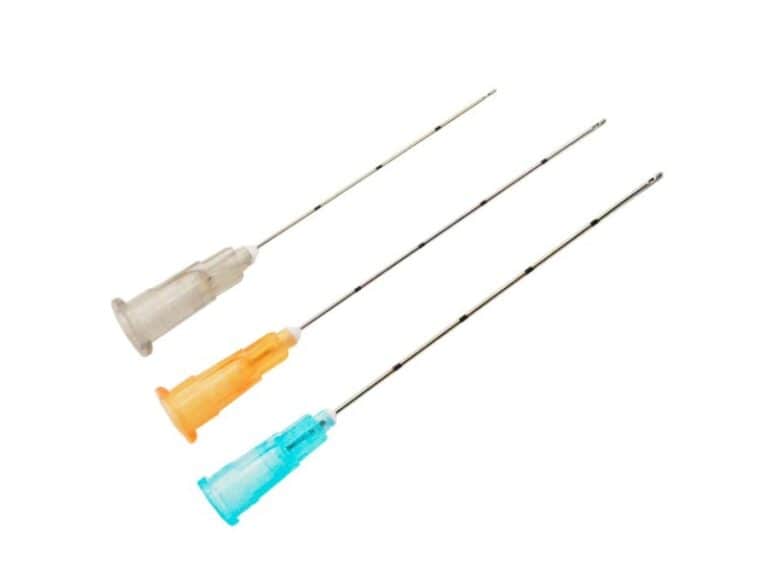Botulinum Toxin for Migraines: A Surprising Solution for Pain Relief
Botulinum toxin, a powerful neurotoxin with both medical and cosmetic applications, has revolutionized the approach to treating muscular disorders and reducing wrinkles. Its precise mechanism allows it to temporarily paralyze muscle activity, making it an invaluable tool in the field of dermatology and neurology. Despite its toxic origins, when administered in controlled doses by qualified professionals, botulinum toxin can significantly improve quality of life for individuals suffering from various conditions. This introduction delves into its uses, benefits, and considerations, providing a comprehensive overview of how botulinum toxin continues to make impactful contributions across different medical disciplines.
Understanding Botulinum Toxin for Migraine Treatment
FDA Approval
Botulinum toxin has received FDA approval specifically for chronic migraine prevention. This endorsement is significant because it marks the substance as both safe and effective when used correctly. Chronic migraines, characterized by headaches occurring on 15 or more days per month, can severely impact an individual’s quality of life.
The FDA’s green light offers hope to those who have struggled with traditional migraine treatments without success. It underscores the rigorous testing and research botulinum toxin has undergone to prove its efficacy in this new application.
Pain Signal Blocking
At its core, botulinum toxin works by blocking pain signals in the nervous system. This action prevents the transmission of pain messages from reaching the brain. For people with chronic migraines, this mechanism offers a reprieve from constant discomfort.
Small doses are key to its effectiveness and safety profile. By targeting specific areas involved in migraine pain pathways, botulinum toxin can reduce frequency and severity without causing significant side effects typically associated with higher doses.
Injection Process
Treatment involves multiple injections around the head and neck area. These injections target muscles that might contribute to migraine development due to tension or other factors.
- The process includes:
- A consultation with a healthcare provider.
- Mapping of injection sites based on individual pain patterns.
- Administration of small doses into identified areas.
This targeted approach allows for tailored treatment plans that address each patient’s unique symptoms and needs while minimizing discomfort during the procedure.
Mechanisms of Action of Botulinum Toxin in Migraine Relief
Neurotransmitter Blockade
Botulinum toxin inhibits neurotransmitter release. This action is crucial for migraine relief. It targets the snare protein, essential for synaptic movement. By doing this, it prevents neurotransmitters involved in pain pathways from being released.
This blockade reduces the signaling that contributes to migraine pain. For example, when botulinum toxin stops the release of certain chemicals, patients often report fewer and less severe migraines.
Muscle Relaxation
Another key mechanism involves reducing muscle tension. Muscles around the head and neck can tighten and contribute to migraine onset. Botulinum toxin helps by relaxing these muscles.
The relaxation effect is due to its ability to interfere with muscle contraction processes. This not only eases current headache symptoms but may also prevent future attacks by keeping muscle tone low.
Central Sensitization Reduction
Botulinum toxin might affect central pain processing systems too. This could lead to a decrease in migraine frequency over time.
It’s thought that botulinum’s actions on sensory neurons reduce central sensitization—a condition where the nervous system becomes overly responsive to stimuli. The process involves several steps including modulation at the dorsal horn level and influence over somatic and sensory afferents.
Therapeutic Use of Botulinum Toxin for Migraines
Treatment Frequency
Botulinum toxin is a powerful tool against migraines. It’s especially helpful for those with 15 or more headache days a month.
Patients undergo treatments every 12 weeks to keep the pain at bay. This regular schedule maximizes the toxin’s effectiveness in reducing migraine frequency and severity. Consistency is key to maintaining relief over time.
Injection Sites
Injections are tailored to each patient’s specific migraine patterns. This personalized approach ensures that the treatment targets the most affected areas.
Common injection sites include the forehead, temples, back of the neck, and shoulders. These areas are chosen based on where patients experience their migraine pain most intensely. By focusing on these regions, botulinum toxin can provide significant relief from migraine symptoms.
- Pros:
- Reduces frequency of headaches
- Targets specific pain points
- Cons:
- Requires regular treatments
- May not work for everyone
Risks Associated with Using Botulinum Toxin for Migraines
Common Side Effects
Botulinum toxin helps many migraine sufferers. However, it can cause side effects.
Patients may experience neck pain after treatment. This discomfort is usually temporary but bothersome. Fatigue is another common side effect, making daily tasks challenging for some people. Injection site reactions are also typical. They include redness, swelling, and bruising at the injection points.
Serious Risks
Although rare, botulinum toxin has serious risks.
The spread of toxin effects is a significant concern. It can lead to muscle weakness and vision problems in some cases. Breathing difficulties are another severe risk associated with botulinum toxin use for migraines. These symptoms require immediate medical attention if they occur.
Patient Suitability
Not everyone can safely receive botulinum toxin injections for migraines.
Individuals with certain neuromuscular disorders should avoid this treatment due to increased risk of adverse reactions.
- Myasthenia gravis
- Eaton-Lambert syndrome These conditions make patients more susceptible to the harmful effects of botulinum toxin.
Clinical History and Effectiveness of Botulinum Toxin in Migraine Treatment
FDA Approval
Clinical trials have played a pivotal role in understanding botulinum toxin’s effectiveness against migraines. Before 2010, the use of this treatment for migraine sufferers was not officially recognized by health authorities. However, rigorous clinical studies demonstrated a significant reduction in headache days for those with chronic conditions.
The U.S. Food and Drug Administration (FDA) approved botulinum toxin as a treatment option based on these findings. This decision came after observing its positive impact over time through various studies. Patients reported fewer headache days each month, marking a breakthrough in migraine management.
Long-Term Efficacy
Long-term use of botulinum toxin shows sustained efficacy and tolerability among patients. Studies indicate that its benefits extend beyond short-term relief, providing lasting improvements for chronic migraine sufferers.
Doctors often recommend continued treatments to maintain these results over time. The frequency of headache days decreases significantly with regular application, according to evidence from clinical settings. This has made botulinum toxin a reliable option for long-term migraine management.
Expectations and Aftercare for Migraine Treatment with Injectables
Initial Improvements
Patients often notice initial improvements within 2-4 weeks following the treatment. This period is critical as it indicates how well your body is responding to botulinum toxin. It’s essential to monitor any changes in headache days or intensity.
Keeping a headache diary can be beneficial. Note down the frequency and severity of headaches before and after treatment. This information will help assess the effectiveness of botulinum toxin in reducing migraine symptoms.
Post-Treatment Care
After receiving botulinum toxin injections, certain precautions are necessary to ensure optimal results. One key advice is to avoid rubbing or massaging the injection sites for at least 24 hours post-treatment. This prevents the spread of toxin away from targeted areas which could reduce its effectiveness or cause unintended effects.
It’s also crucial not to engage in strenuous activities immediately after treatment. Such actions might increase blood flow, potentially dispersing the toxin prematurely.
Follow-Up Appointments
Regular follow-up appointments are vital for adjusting your treatment plan based on observed outcomes and patient feedback. During these sessions, healthcare providers can modify dosages or target new sites based on your progress and any side effects experienced.
These appointments offer an opportunity to discuss concerns like any unexpected increase in headache days post-treatment or other issues related directly to injection sites such as discomfort or bruising.

Insurance Coverage for Botox Treatment of Migraines
Medical Necessity
Many insurance plans consider botulinum toxin treatment a covered expense. This is true if it’s deemed medically necessary for conditions like chronic migraines. Before receiving coverage, patients often must provide detailed migraine history. This includes frequency and severity of attacks.
Insurance companies typically require documentation from healthcare providers. They need proof that other treatments have been tried and failed. Patients may also need to show how migraines impact their daily life.
Prior Authorization
Obtaining prior authorization is a crucial step in the process. Without this approval, patients might face significant out-of-pocket costs. The authorization process involves submitting medical records and a treatment plan from your doctor.
It can take several weeks to receive an answer from your insurance provider. During this time, communication between your healthcare team and insurance company is key. They work together to justify the necessity of botulinum toxin therapy for your condition.
Cost Variables
The cost of botulinum toxin treatment varies widely depending on several factors:
- The specific insurance plan
- Treatment frequency
- Geographic location where the treatment is administered
Patients should contact their insurance provider directly to understand their coverage details better. Some plans may cover the entire cost, while others could require copayments or coinsurance.
Summary of Possible Side Effects of Botox for Migraines
Common Issues
Botulinum toxin, often referred to as Botox, is used in treating migraines. However, it comes with possible side effects. Patients might experience temporary bruising, swelling, or redness at the injection sites immediately after treatment.
These side effects are usually mild and resolve on their own within a few days. It’s essential for patients to follow post-treatment care instructions provided by their healthcare provider to minimize discomfort.
Uncommon Reactions
In some cases, more uncommon reactions can occur post-Botox treatment. These include eyelid drooping, muscle weakness, or vision problems. Although not frequent, they can cause inconvenience and should be monitored closely.
If any of these symptoms persist or worsen over time, contacting a healthcare professional is crucial for advice and potential treatment adjustments.
Serious Concerns
Serious allergic reactions to botulinum toxin are rare but require immediate medical attention if they occur. Symptoms may include difficulty breathing, swelling around the eyes or face, and severe rash.
Patients should always inform their healthcare provider of any known allergies before receiving Botox treatments to prevent such serious complications.
Understanding the range of possible side effects from botulinum toxin treatments for migraines helps patients make informed decisions about their health care options following insurance coverage discussions.
- Temporary issues: bruising, swelling
- Less common: eyelid drooping
- Rare but critical: allergic reactions
Closing Thoughts
Botulinum toxin has emerged as a significant option for individuals grappling with migraines, offering relief where traditional treatments may fall short. The exploration of its mechanisms, therapeutic uses, and the careful consideration of associated risks underscores its potential in migraine management. It stands as a testament to medical innovation, providing those affected by chronic migraines a beacon of hope. However, it’s crucial for patients to engage in informed discussions with healthcare professionals about the suitability of botulinum toxin for their specific condition, taking into account the clinical history, effectiveness, and possible side effects detailed throughout this discussion.
The journey towards managing migraines with botulinum toxin is marked by careful planning and understanding of aftercare and insurance coverage aspects. As research continues to unfold, it becomes increasingly important for patients and healthcare providers to stay abreast of the latest findings and treatment protocols. For those considering this form of treatment, initiating a conversation with a medical specialist is the first step towards potentially finding relief from the debilitating effects of migraines. This dialogue ensures that every individual can make informed decisions regarding their health and well-being.
Frequently Asked Questions
How does botulinum toxin help in migraine relief?
Botulinum toxin blocks neurotransmitters that carry pain signals from your brain, effectively reducing migraine symptoms.
What are the risks of using botulinum toxin for migraines?
Possible risks include neck pain, muscle weakness, eyelid drooping, and injection site reactions. Consult a healthcare provider for a comprehensive list.
Can botulinum toxin be used as a therapeutic option for all migraine sufferers?
It’s primarily recommended for those with chronic migraines (15 or more headache days per month). A healthcare professional can determine suitability.
What is the clinical history and effectiveness of botulinum toxin in treating migraines?
Clinical trials have shown it to reduce the frequency of headache days in chronic migraine sufferers when administered every 12 weeks.
What should patients expect during and after migraine treatment with injectables like botox?
Expect multiple injections around your head and neck every 12 weeks. Post-treatment, some may experience temporary soreness or bruising at injection sites.
Is Botox treatment for migraines covered by insurance?
Coverage varies; many insurers require documentation of chronic migraine diagnosis and previous unsuccessful treatments before approving coverage.
What are common side effects of Botox when used for migraines?
Side effects may include neck pain, stiffness, muscle weakness around injected areas. Serious side effects are rare but should be reported immediately.






